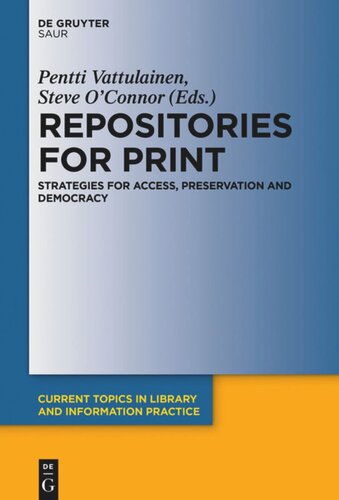

Most ebook files are in PDF format, so you can easily read them using various software such as Foxit Reader or directly on the Google Chrome browser.
Some ebook files are released by publishers in other formats such as .awz, .mobi, .epub, .fb2, etc. You may need to install specific software to read these formats on mobile/PC, such as Calibre.
Please read the tutorial at this link: https://ebookbell.com/faq
We offer FREE conversion to the popular formats you request; however, this may take some time. Therefore, right after payment, please email us, and we will try to provide the service as quickly as possible.
For some exceptional file formats or broken links (if any), please refrain from opening any disputes. Instead, email us first, and we will try to assist within a maximum of 6 hours.
EbookBell Team

4.0
86 reviewsRepositories for low use books have long existed for the larger cultural institutions across the globe. Libraries have long been strong developers of off-site storage. This need has evolved for libraries because of their continuous collection of print materials as a record of the intellectual and cultural output of different cultures. Libraries have had this role described neatly and executed as a clear professional role. This new book will primarily examine two aspects of this role: Firstly, the organisational and technological responses to this evolving role will be explored and secondly, the wide breadth of strategic responses to challenges of ‘digital’ will be detailed.
In this authors to this edited volume will describe their work for libraries but increasingly for Galleries, Archives and Museums. The papers are drawn from Europe, United Kingdom, the United States and Australasia.
The organisational models discussed in the book provide clear illustration of imaginative responses to the plight of the individual institutional library. New organisational models are shaping the way in which business can be done in times of change. The pressures today on all cultural institutions are similar and so there is a new convergence of similar need and similar solutions.
This book is an acknowledgment that there are a wide variety of strategic, organisational and technological responses to the retention of cultural objects whether they be books, art, records or other cultural objects. It is illustrative of the power of good lateral thinking and planning by professionals, of the power of international networks and of convergence in response to need.
The book will be an edited with a future perspective by Pentti Vattulainen and Steve O’Connor who have had significant experience in this area internationally.